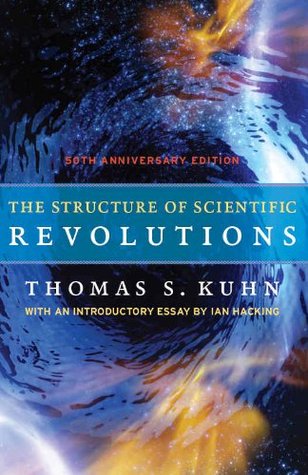More on this book
Community
Kindle Notes & Highlights
In this essay, ‘normal science’ means research firmly based upon one or more past scientific achievements, achievements that some particular scientific community acknowledges for a time as supplying the foundation for its further practice.
practitioners. They were able to do so because they shared two essential characteristics. Their achievement was sufficiently unprecedented to attract an enduring group of adherents away from competing modes of scientific activity. Simultaneously, it was sufficiently open-ended to leave all sorts of problems for the redefined group of practitioners to resolve.
Achievements that share these two characteristics I shall henceforth refer to as ‘paradigms,’ a term that relates closely to ‘normal science.’ By choosing it, I mean to suggest that some accepted examples of actual scientific practice—examples which include law, theory, application, and instrumentation together—provide models from which spring particular coherent traditions of scientific research. These are the traditions which the historian describes under such rubrics as ‘Ptolemaic astronomy’ (or ‘Copernican’), ‘Aristotelian dynamics’ (or ‘Newtonian’), ‘corpuscular optics’ (or ‘wave
...more
To be accepted as a paradigm, a theory must seem better than its competitors, but it need not, and in fact never does, explain all the facts with which it can be confronted.
Both fact collection and theory articulation became highly directed activities. The effectiveness and efficiency of electrical research increased accordingly, providing evidence for a societal version of Francis Bacon’s acute methodological dictum: “Truth emerges more readily from error than from confusion.”
Ever since prehistoric antiquity one field of study after another has crossed the divide between what the historian might call its prehistory as a science and its history proper. These transitions to maturity have seldom been so sudden or so unequivocal as my necessarily schematic discussion may have implied. But neither have they been historically gradual, coextensive, that is to say, with the entire development of the fields within which they occurred.
During the half-century after 1740, few new sorts of electrical phenomena were added to their lists. Nevertheless, in important respects, the electrical writings of Cavendish,
Coulomb, and Volta in the last third of the eighteenth century seem further removed from those of Gray, Du Fay, and even Franklin than are the writings of these early eighteenth-century electrical discoverers from those of the sixteenth century.
between 1740 and 1780, electricians were for the first time enabled to take the foundations of their field for granted.
From that point they pushed on to more concrete and recondite problems, and increasingly they then reported their results in articles addressed to other electricians rather than in books addressed to the learned world at large.
They had, that is, achieved a paradigm that proved able to guide the whole group’s research. Except with the advantage of hindsight, it is hard to find another criterion that so clearly proclaims a field a science.
A second usual but smaller class of factual determinations is directed to those facts that, though often without much intrinsic interest, can be compared directly with predictions from the paradigm theory.
when I turn from the experimental to the theoretical problems of normal science, there are seldom many areas in which a scientific theory, particularly if it is cast in a predominantly mathematical form, can be directly compared with nature.
Furthermore, even in those areas where application is possible, it often demands theoretical and instrumental approximations that severely limit the agreement to be expected.
Atwood’s machine, first invented almost a century after the Principia, to give the first unequivocal demonstration of Newton’s second law;
That attempt to demonstrate agreement is a second type of normal experimental work, and it is even more obviously dependent than the first upon a paradigm. The existence of the paradigm sets the problem to be solved; often the paradigm theory is implicated directly in the design of apparatus able to solve the problem.
A third class of experiments and observations exhausts, I think, the fact-gathering activities of normal science. It consists of empirical work undertaken to articulate the paradigm theory, resolving some of its residual ambiguities and permitting the solution of problems to which it had previously only drawn attention.
These three classes of problems—determination of significant fact, matching of facts with theory, and articulation of theory—exhaust, I think, the literature of normal science, both empirical and theoretical. They do not, of course, quite exhaust the entire literature of science. There are also extraordinary problems, and it may well be their resolution that makes the scientific enterprise as a whole so particularly worthwhile.
One of the reasons why normal science seems to progress so rapidly is that its practitioners concentrate on problems that only
their own lack of ingenuity should keep them from solving.
Rules, I suggest, derive from paradigms, but paradigms can guide research even in the absence of rules.


